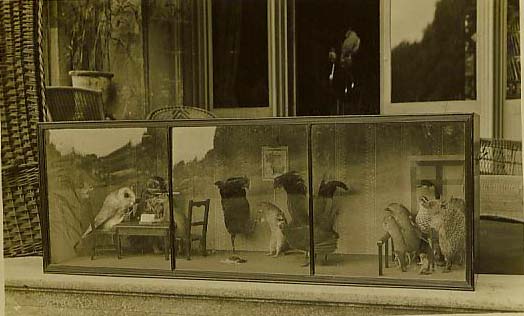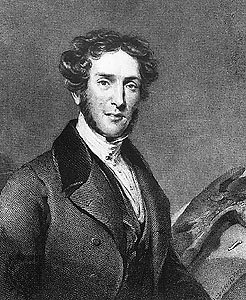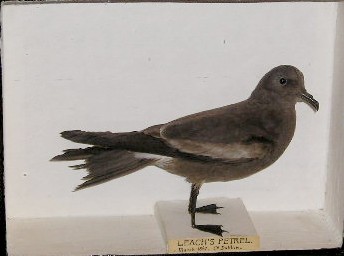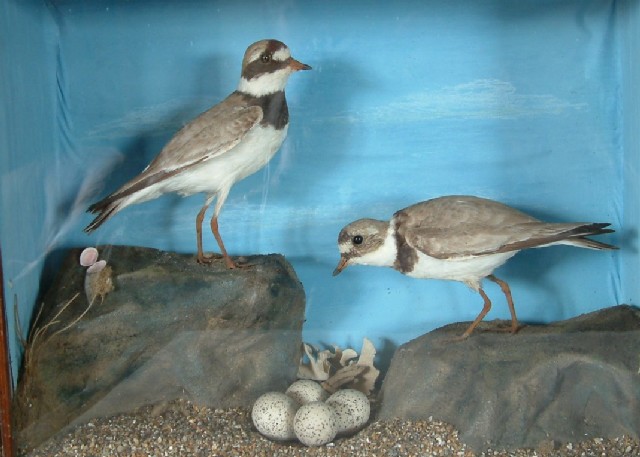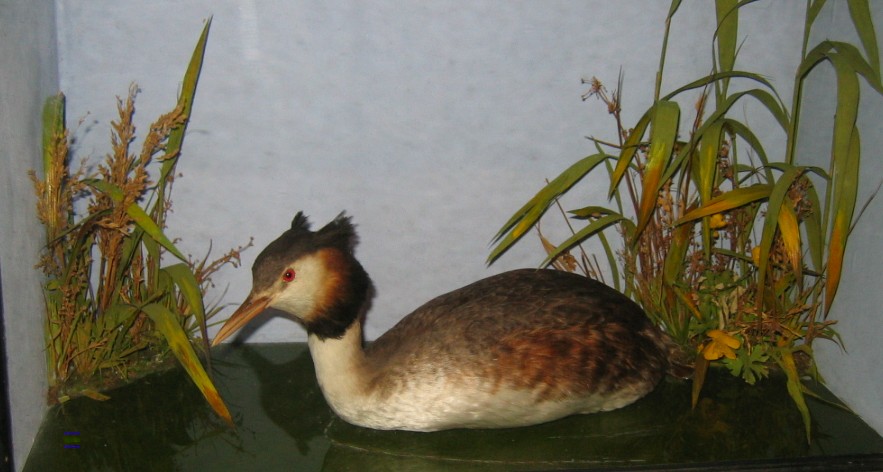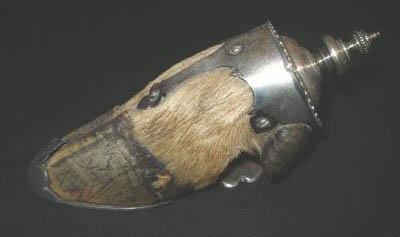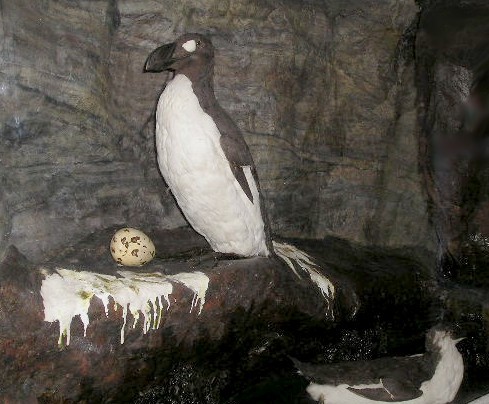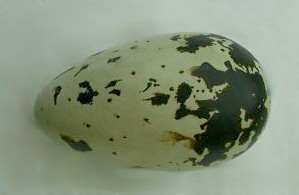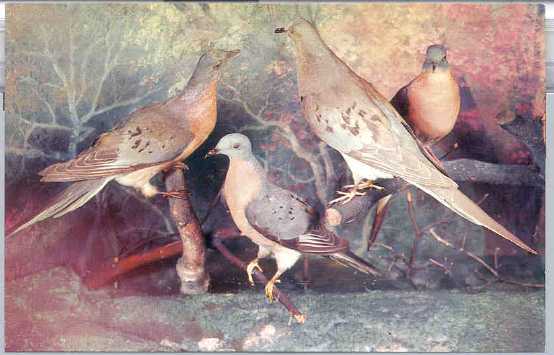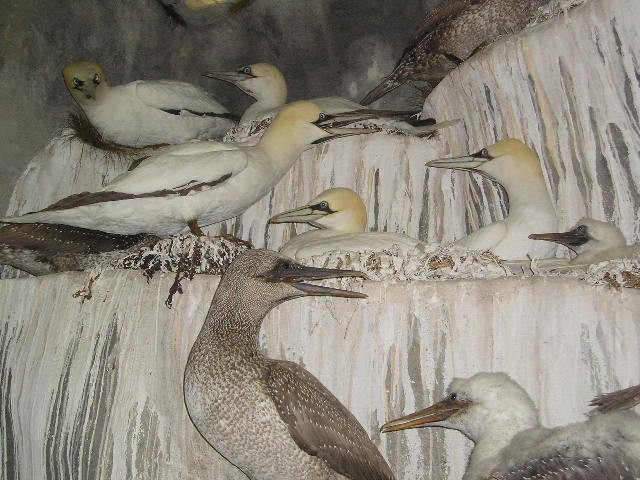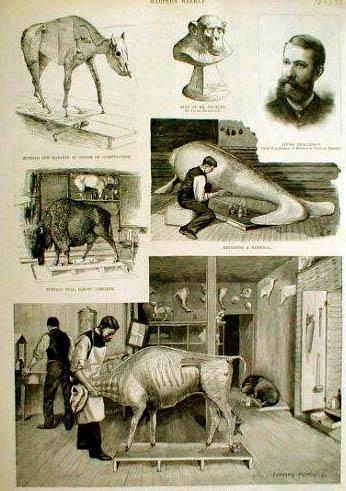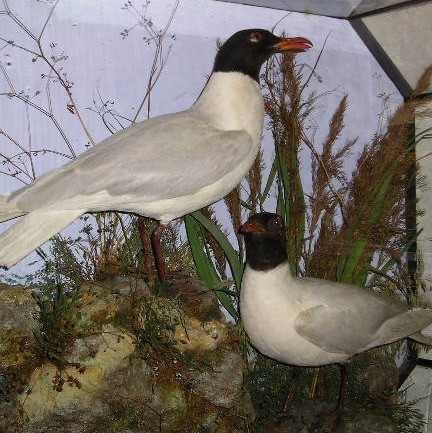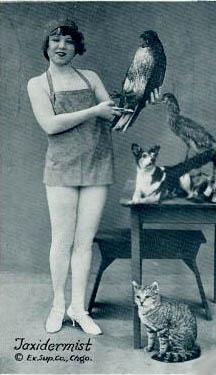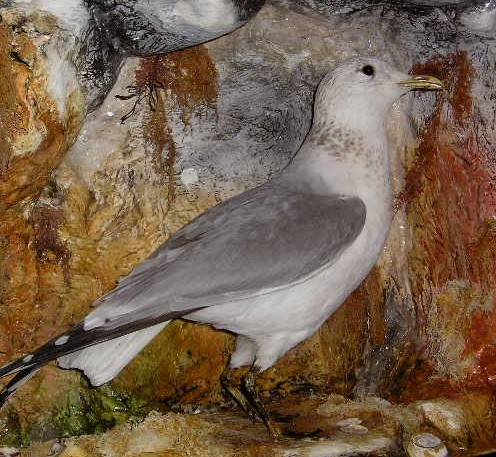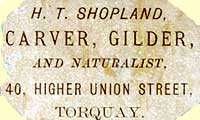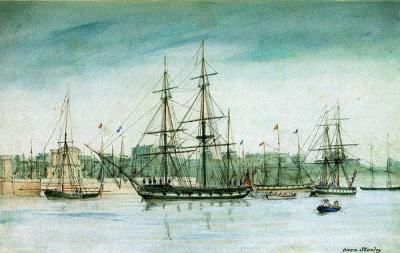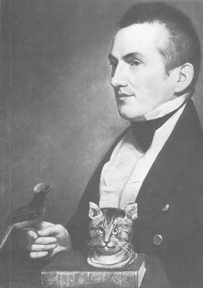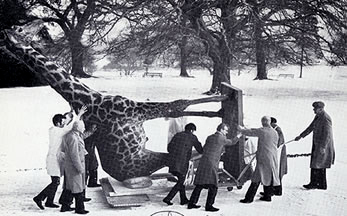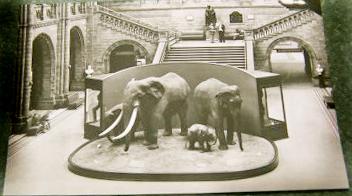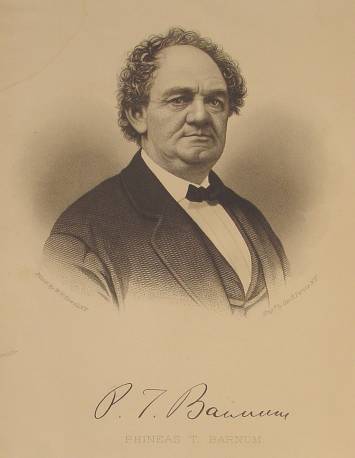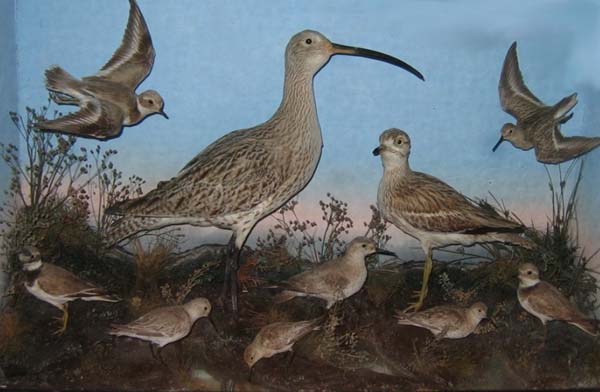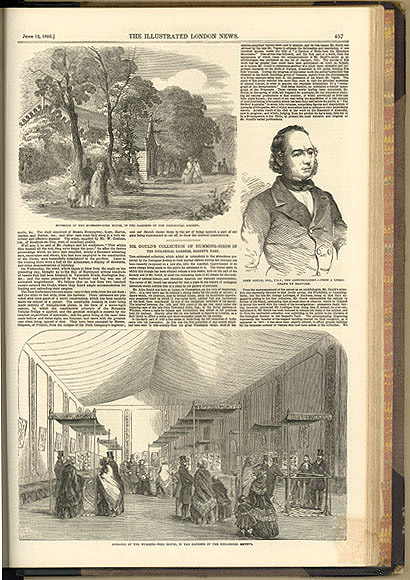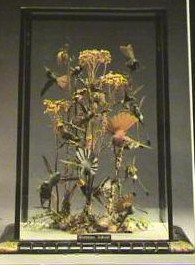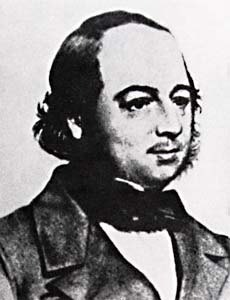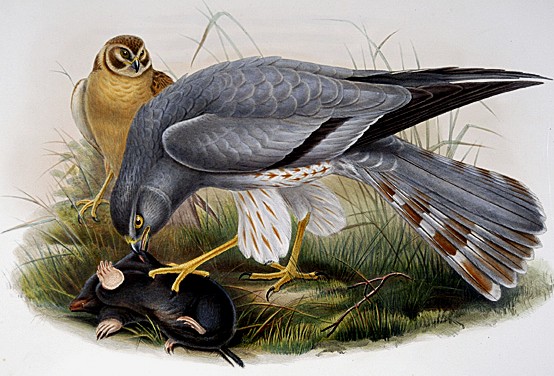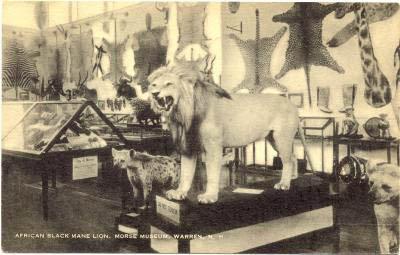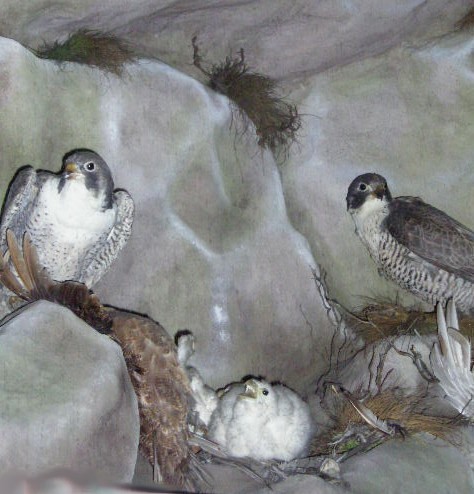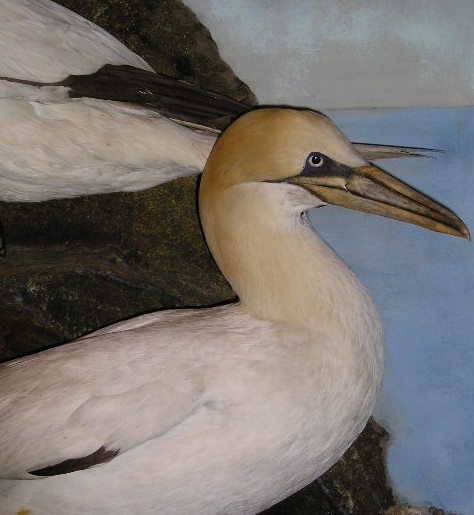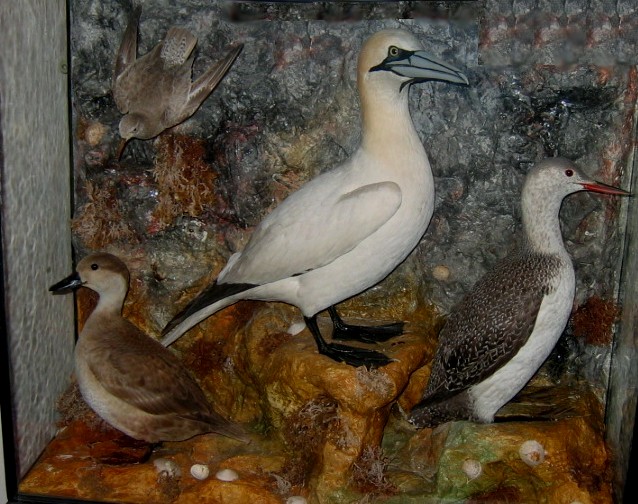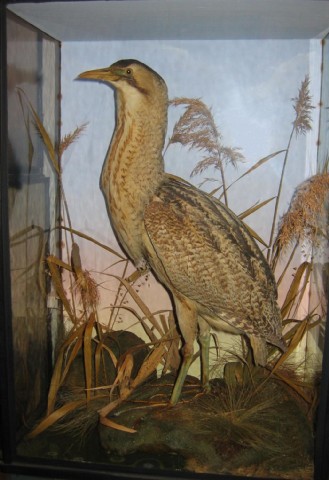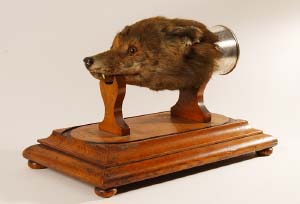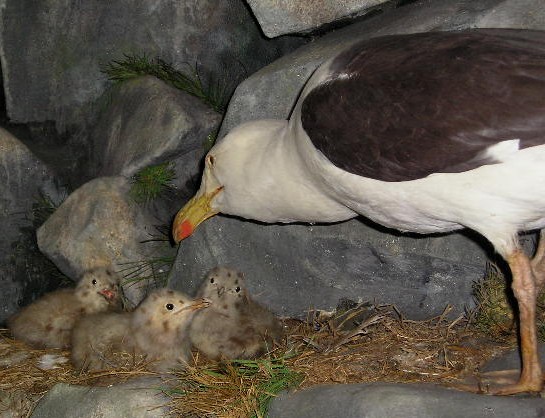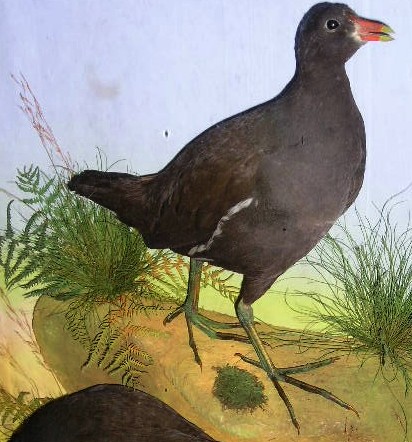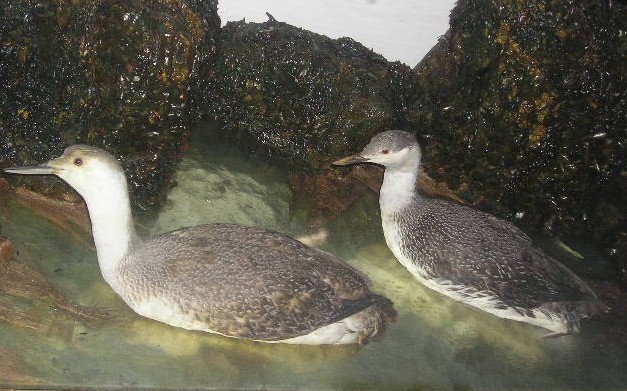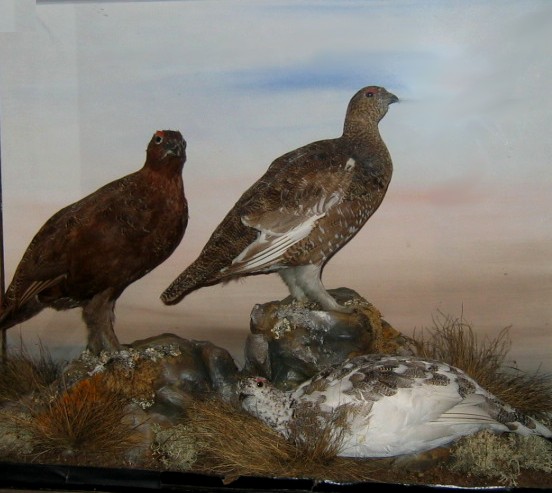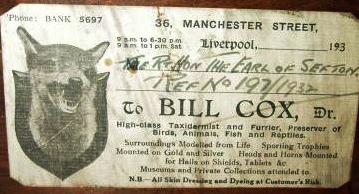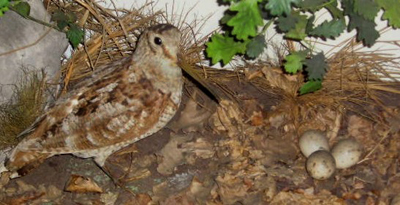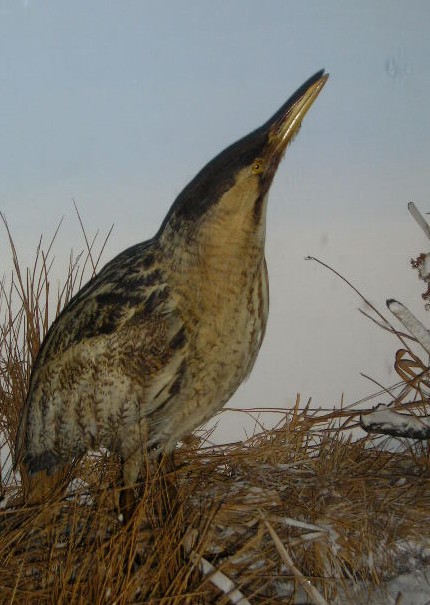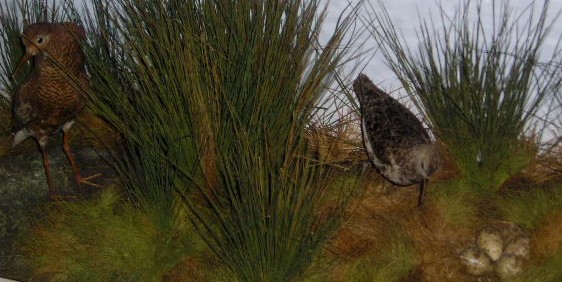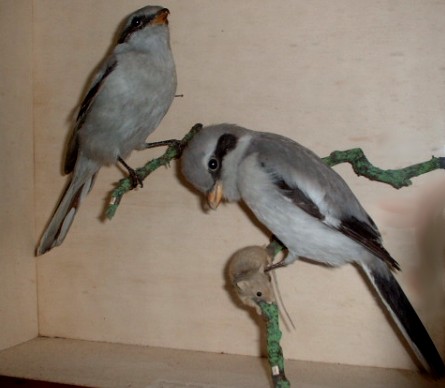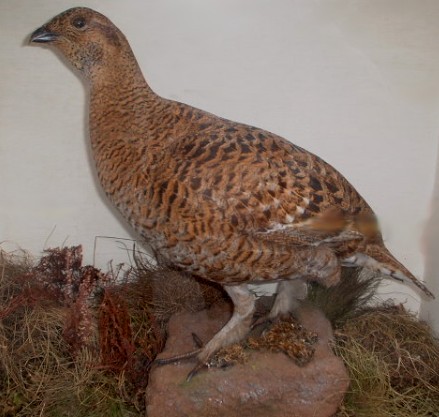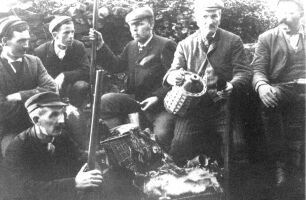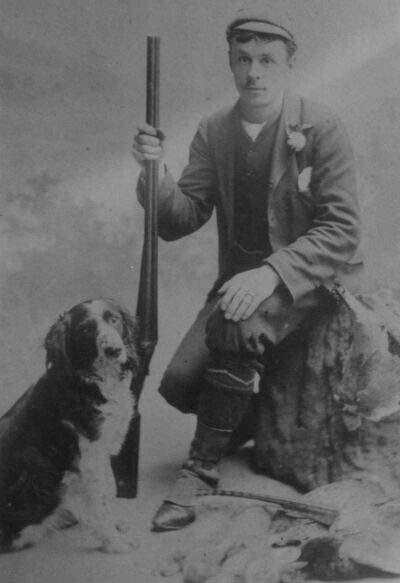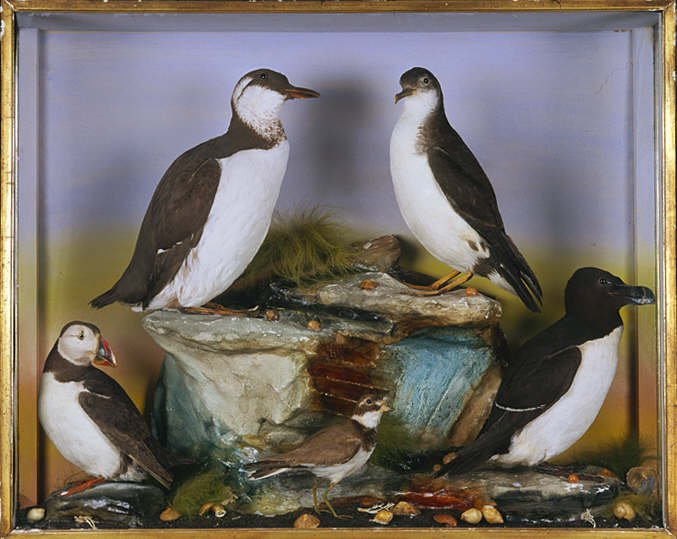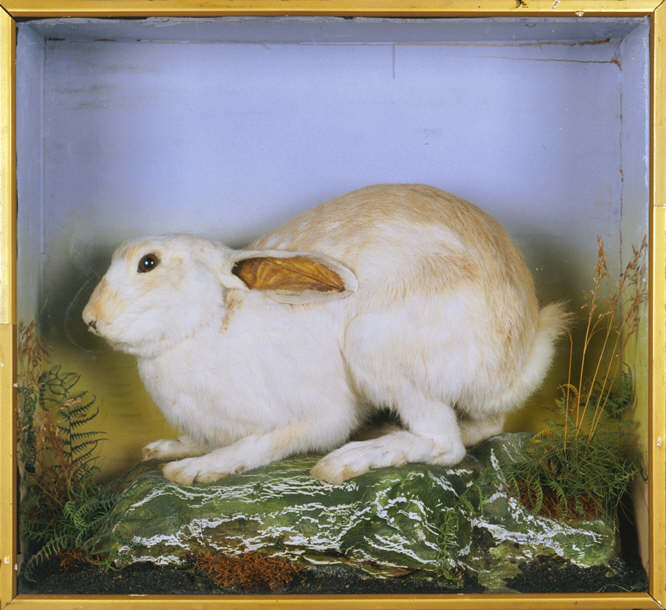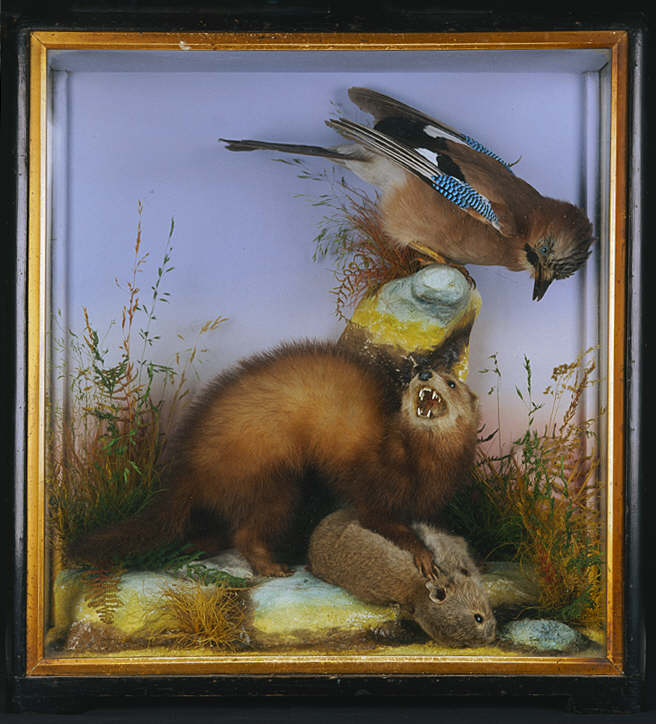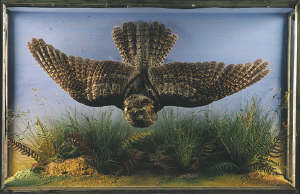Edward Gerrard
The commercial firm of Edward Gerrard’s was founded in 1853. The business was, and remained for more than a century, a family concern. By family tradition, the eldest son f the eldest son was always named Edward, a process that only faltered when Edward Gerrard, great great grandson of the company founder did not produce a son, but instead two daughters, Elizabeth (born 1930?) and Audrey (born 1931). As a result, EG’s younger son, Charles, named his eldest son Edward (born 1933), who became Managing Director of the firm until it finally closed down in the late 1960’s (apart from the hire business). Mr Edward ‘Ted’ Gerrard currently lives abroad, where he has pursued a career as an ornithologist. Copywrite Dave Chapman.
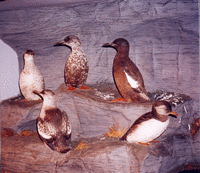
Sea Birds by TE Gunn. Victorian. Copywrite Dave Chapman
William Crawford Williamson
Professor William Crawford Williamson FRS, the eminent Victorian scientist who was appointed as the first Professor of Natural History (Geology, Zoology and Botany) at Manchester in 1851. Williamson was one of the great Victorian naturalists who knew and actively corresponded with Charles Darwin, Louis Agassiz, T.H. Huxley and other great scientists of the day. He also knew John Dalton and famously tended the great man during his final days, feeding him broth and other liquid sustenance. Williamson trained as a doctor and practised as an eye surgeon as well as pursuing his studies in the natural sciences. He was instrumental in the development of the study of rocks in thin section and did pioneering work in palaeobotany. Now, 150 year after one man bridged the great natural science disciplines, in the Centre named for Williamson we again bring together the geological and biological sciences in interdisciplinary research.
H. Brazenor
This local Taxidermist was based in Stockport, Manchester in the 1920’s having left the family business, started by his father in the 1870’s in Brighton.
T.E. Gunn
Born in 1844, he worked in Norwich all his life. He had a shop there and became known as one of the best taxidermists in the area. He died in 1923.

Common Terns by TE Gunn. Diorama contains nests, chicks and eggs. Victorian taxidermy case
Swaysland
George Swaysland founded this family firm, based in Brighton, in 1830. This was continued into the 1930’s by his son, and then his grandson, both called Walter.
Betteridge and Son
Founded in 1872 by John Betteridge, in Birmingham, his son continued until his death in 1958. This firm specialised in display work for museums and Bolton Taxidermy Museum has many examples of their work.
Below are some more companies that sell Taxidermy

Roe Deer
www.victorian-taxidermy.co.uk
www.acaseofcuriosities.com
www.antiques-uk.net
www.taxidermy.co.uk
An interesting French site now up, I suggest you take a look
taxidermy.monsite.wanadoo.fr/
Taxidermy4Cash does not undertaken taxidermy, rather we are collectors of
other people’s work, both current and historical we also offer web hosting,
a search engine submission service and increasingly one of the larger
article resource banks on the net. So if your keen to learn about Taxidermy
etc, then you know where to look.
We are always interested to here about new resource, if you feel a resource
should be listed here then please contact us.
|
ITEMS
WANTED. Please respond via this on-line form HERE
with a description of what you have for sale.
[HOMEPAGE]
Taxidermy Links.
Please double click on the Taxidermy link icon below.
Taxidermy
Links
|
|
.jpg)
.jpg)
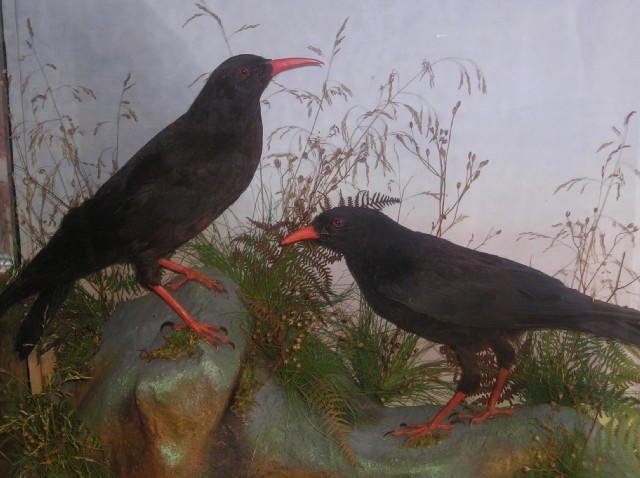
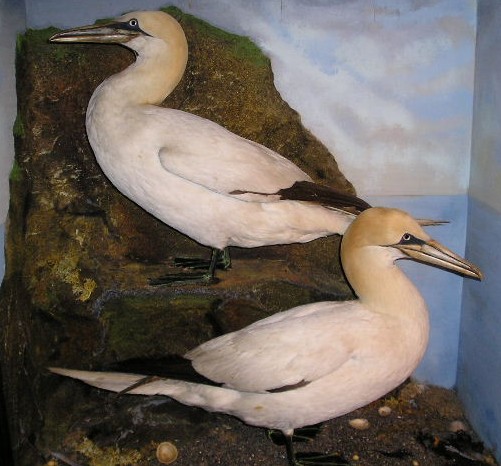
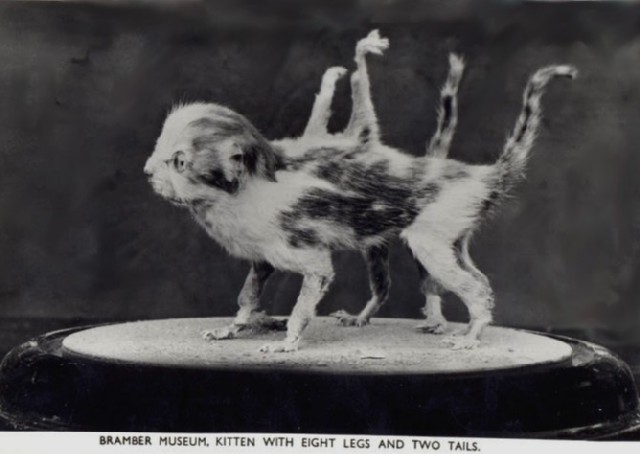
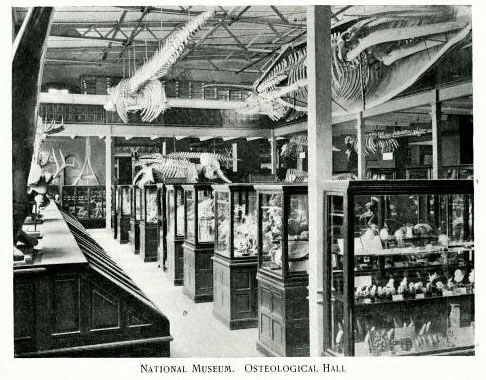
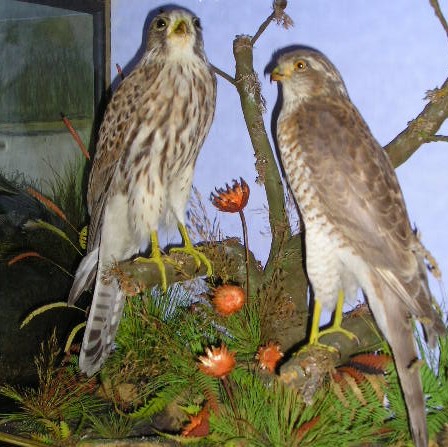
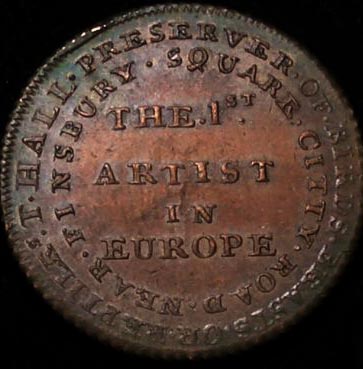
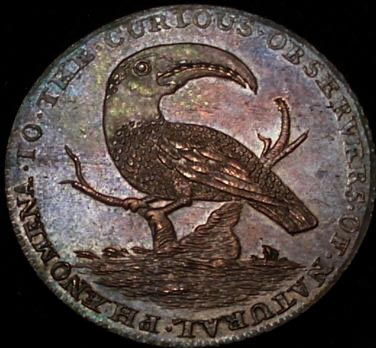
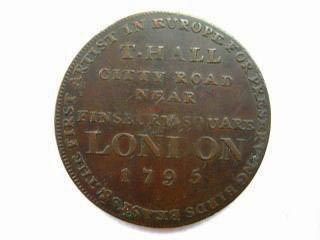
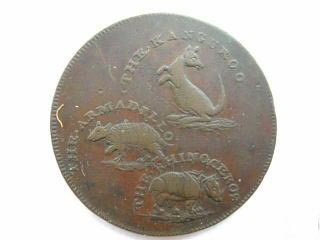
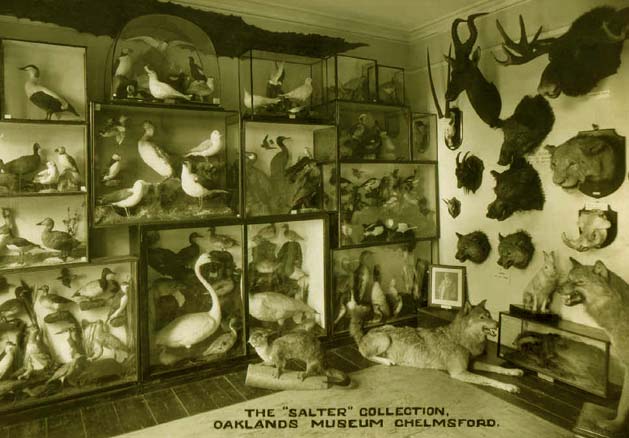
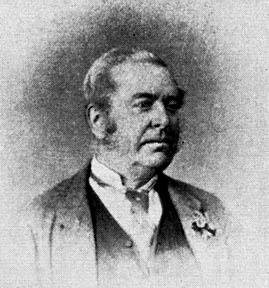
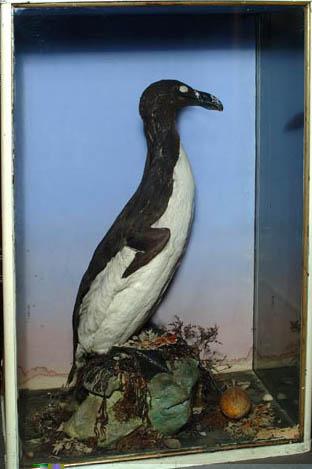
![Great Northern Diver 3 (Shaw)[1].jpg](Great Northern Diver 3 (Shaw)[1].jpg)
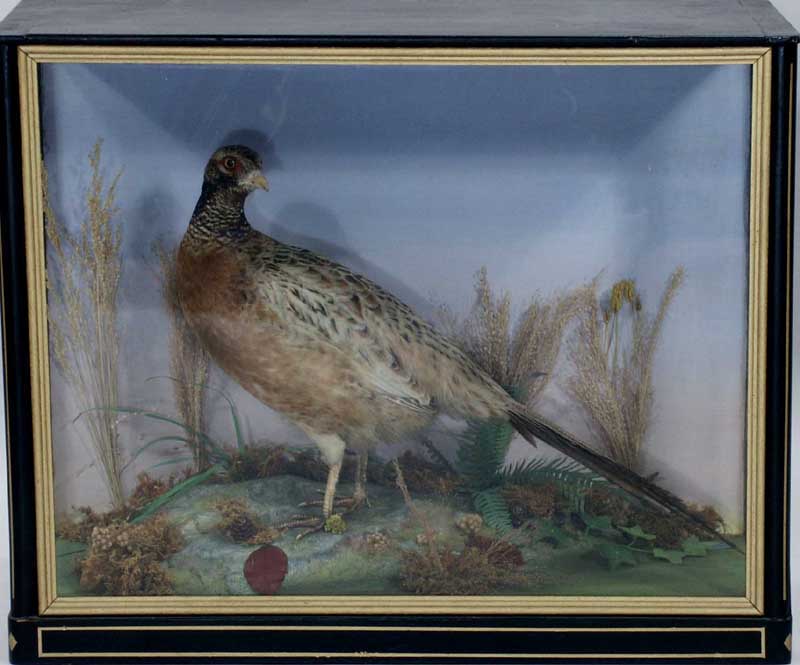
![Great Northern Diver 2 (Shaw)[1].jpg](Great Northern Diver 2 (Shaw)[1].jpg)
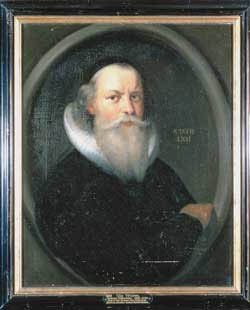
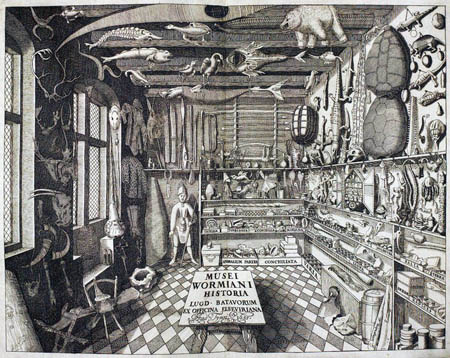
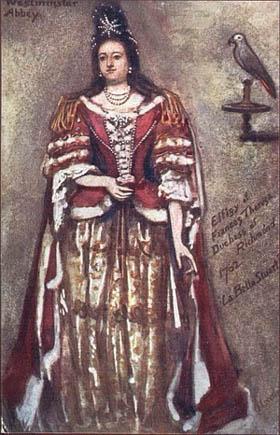
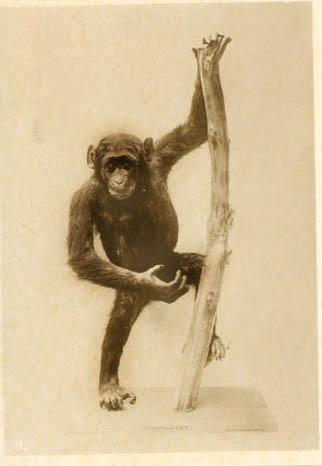
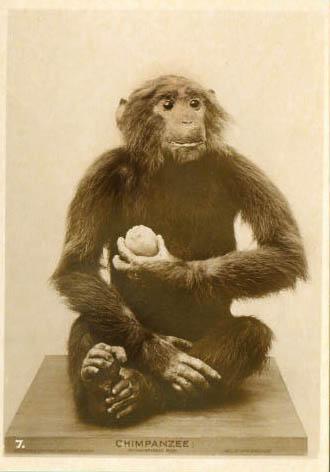
.jpg)
